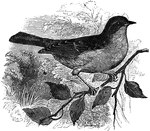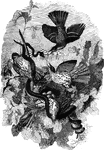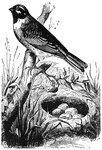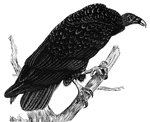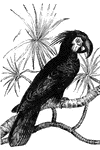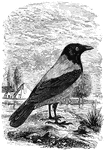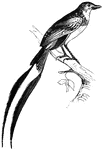
Tricolored Alectrurus
Native to South America, the tricolored alectrurus measures only six inches in length.
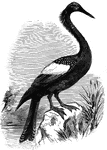
Anhinga
Also known as the snake-bird, the anhinga inhabits the freshwater areas of the South Atlantic States;…
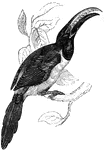
Humboldt's Araçarl
A native of Brazil, Humboldt's araçarl averages approximately seventeen inches in length
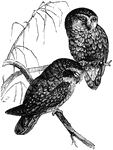
Athene Maculta
Athene maculta, which derive their name from the Greek goddess of wisdom, supposedly for their meditative…

Great auk, razor-bills, and puffins
A scene depicting a great auk, as well as razor-bills and puffins. The great auk is now extinct.

Avocet
The avocet averages about eighteen inches in length, feeding on worms, aquatic insects, and thin-skinned…
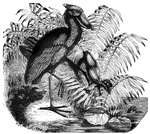
Balœniceps
About three feet, nine inches in height, the balœniceps is native along the banks of the White…
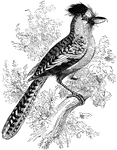
Batara
Taking its name from the Azara people of South America, the batara is the largest of the shrikes.
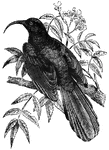
Namaqua Bee-Eater
The namaqua bee-eater, native to Western Africa. Its diet consists of insects, particularly bees and…
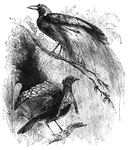
Bird of Paradise
A pair of birds of paradise, the emerald bird of paradise (above) and the superb bird of paradise (below).
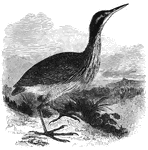
American Bittern
Measuring approximately twenty-six inches in length, the American bittern is a nocturnal hunter. It…
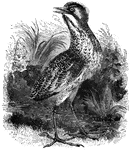
Common Bittern
The common bittern of Europe feeds at night, primarily on frogs, lizards, small birds, and fish.

Blackbird
Black with a yellow bill, the blackbird feeds mostly on larvae, snails, worms, insects, and fruits.
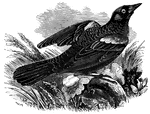
Red-Winged Blackbird
Also known as the red-winged oriole, the red-winged blackbird is known for gathering in immense flocks,…
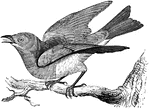
Bluebird
The bluebird feeds on a diet of insects and spiders in the summer and berries in the winter. It usually…
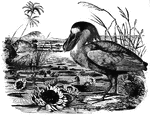
Boatbill
Also known as the crested savacou, the boat-bill gets its name from the shape of its beak, which resembles…

Footprint of brontozoum giganteum
A footprint of brontozoum giganeum, a now extinct relative of the cassowary. This example is eighteen…
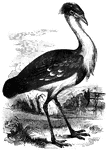
Black-Billed Bustard
Found in India, the black-billed bustard can measure up to four and a half feet in length.
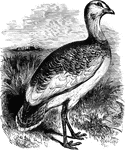
Great Bustard
Forty-five inches in length, the great bustard feeds on green wheat, grapes, trefoil, and other vegetable…
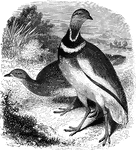
Little European Bustard
The little European bustard measures about seventeen inches in length, and is found predominently in…
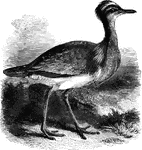
Macqueen's Bustard
Feeding mostly on insects, Macqueen's bustard makes its home in the dry sandy plains of Afganistan.
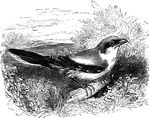
Great Butcher-Bird
Also known as the gray shrike, the great butcher-bird is known for securing its prey to thorns so that…
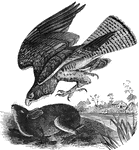
Common Buzzard of Europe
"B. vulgaris is twenty-two inches long, the head is large and the body heavy. Above, the color…

Turkey Buzzards
Genus Cathartes, found in the Americas, sometimes as far north as New England. These buzzards…
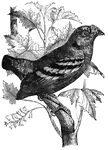
Green Calyptomena
Found in Java and Sumatra, the green calyptomena's namesake plumage helps it blend in with foliage.
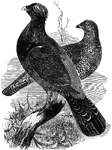
Capercaille
Also known as the wood-grouse, the capercaille averages about three feet in length and feeds on berries…
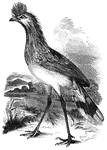
Cariama
Found on the elevated plains of Paraguay and Brazil, the cariama is about thirty inches long and feeds…

Flute-Playing Cassican
Noted for its voracious appetite, the flute-playing cassican has been known to eat small birds.
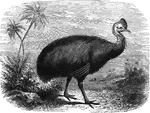
Cassowary
The cassowary is a large, flightless bird native to Australia and New Guinea. Its head and neeck have…
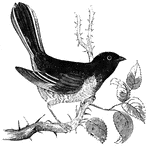
Chewink
Also known as the ground-robin or ground-finch, the chewink lives in thickets along the borders of woods.
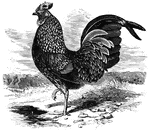
Kulm Rooster
Measuring twenty-six inches in height, the kulm cock is believed to have been brought from Java or Sumatra.

Chough
Also known as the red-legged crow, the chough is about sixteen inches in length, feeding on insects,…
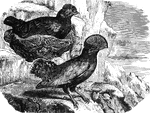
Cock-of-the-Rock
Approximately the size of pigeon, the cock of the rock has a distinctive crest of feathers arranged…

White-crested cockatoo
The white-crested cockatoo possess a distinctive crest of feathers it can raise or lower at will.
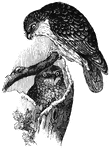
Athene conneviens
Athene conneviens, which derive their name from the Greek goddess of wisdom, supposedly for their meditative…
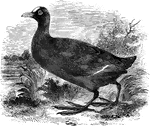
Common European coot
Averaging about sixteen inches in length, the common coot of Europe is found throughout Europe and Asia.
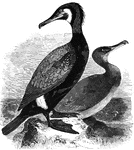
Black cormorant
The black cormorant averages about three feet in length, and is found in Greenland, as well as a long…

Cow-blackbird
A migratory bird, the cow-blackbird is notable among birds, for it does not build a nest.

Balearic Crane
The balearic crane (also known as the crowned crane) stands about four feet high, and is easily domesticable.

Common European crane
The common crane of Europe is mostly of a blueish-ash color, feeding on worms, insects, reptiles, mollusca,…

Numidian Crane
Averaging about three feet in length, the numidian crane makes its home in Africa, though it has been…
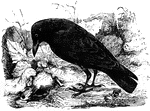
Carrion-Crow of Europe
The carrion-crow of Europe has been known to feed on decaying flesh, as well as young birds, shellfish,…
